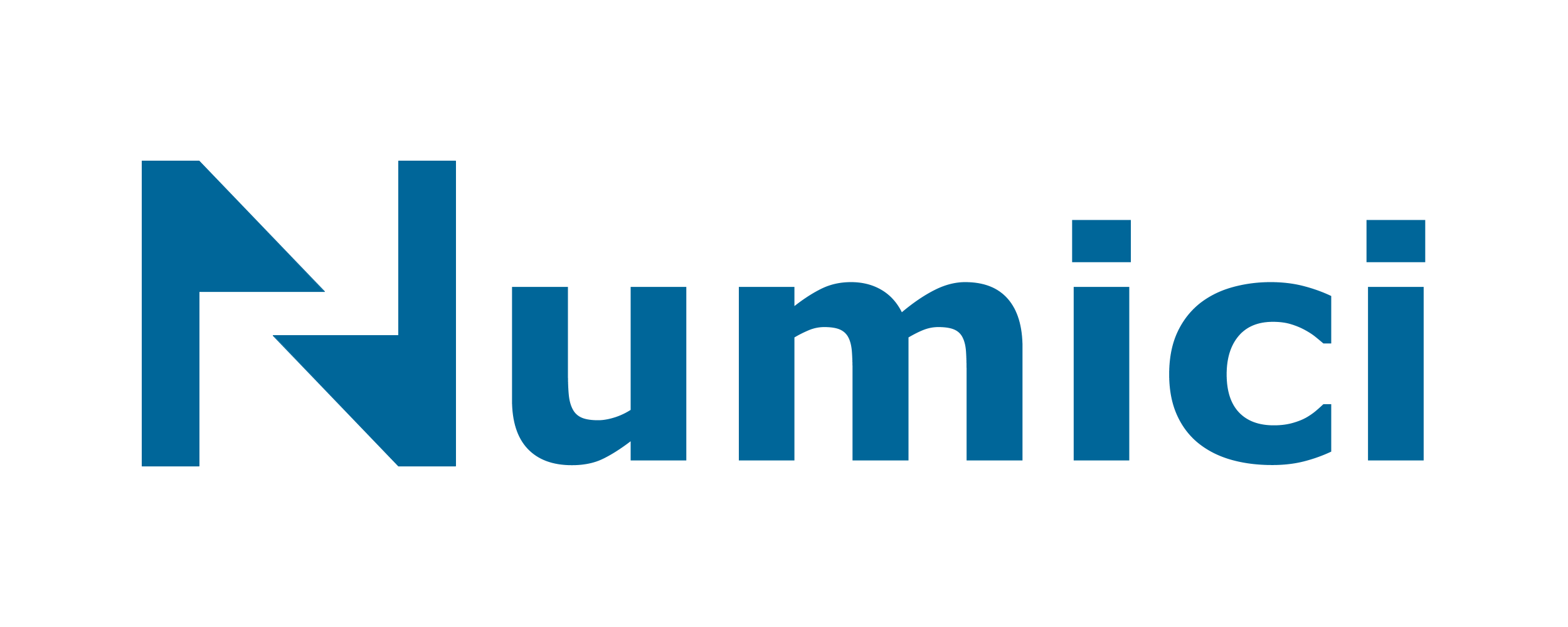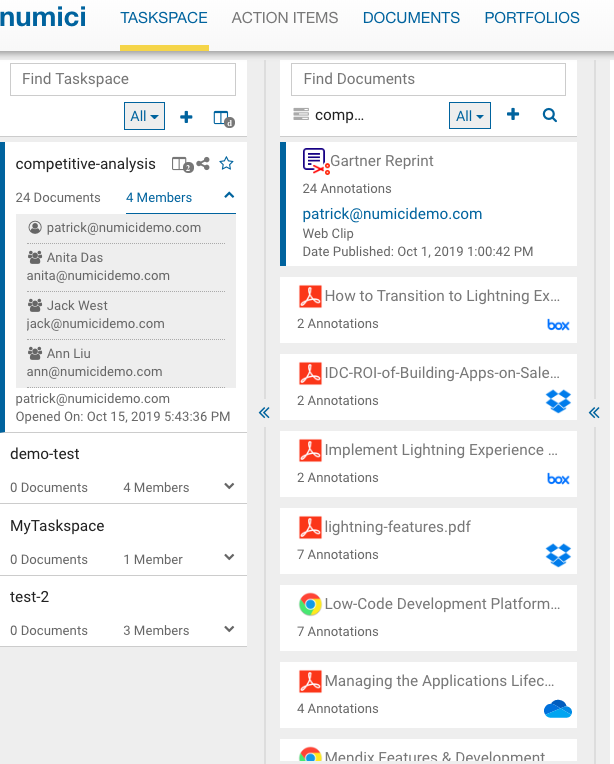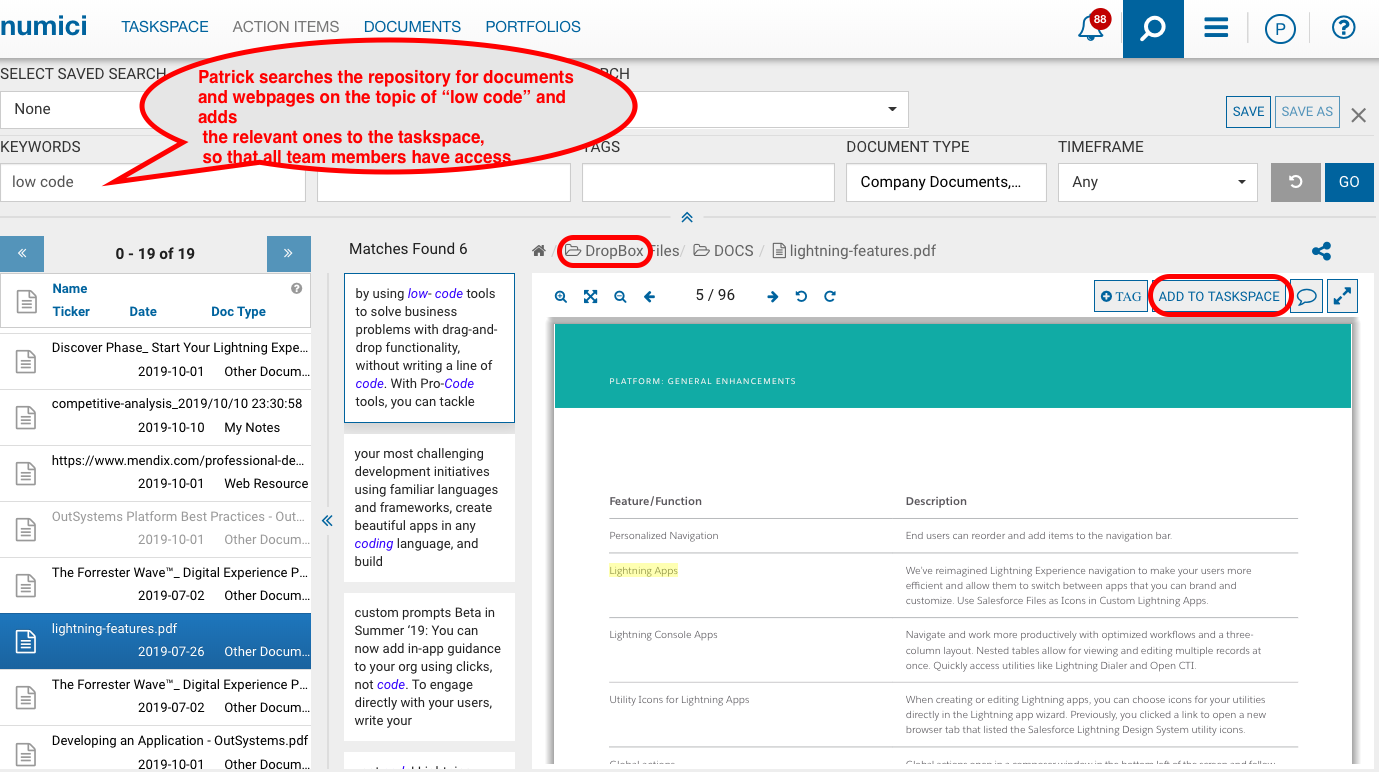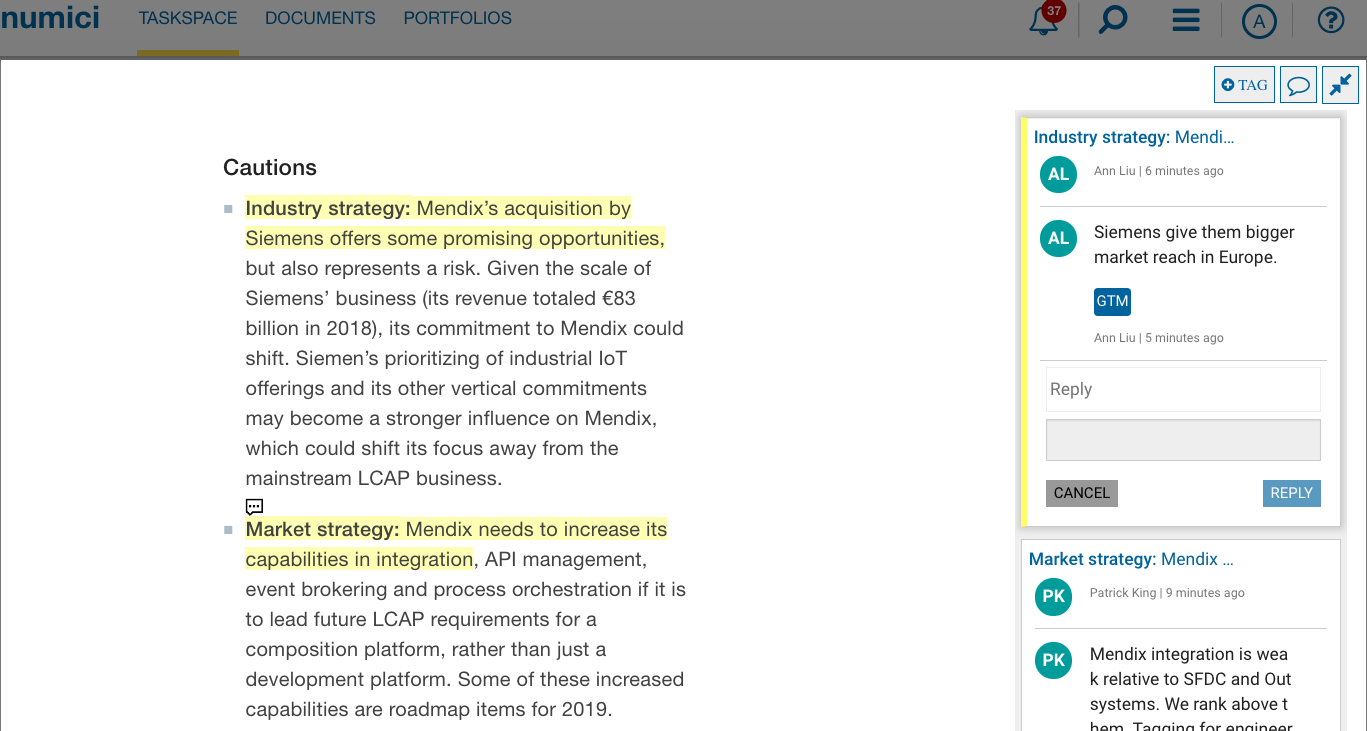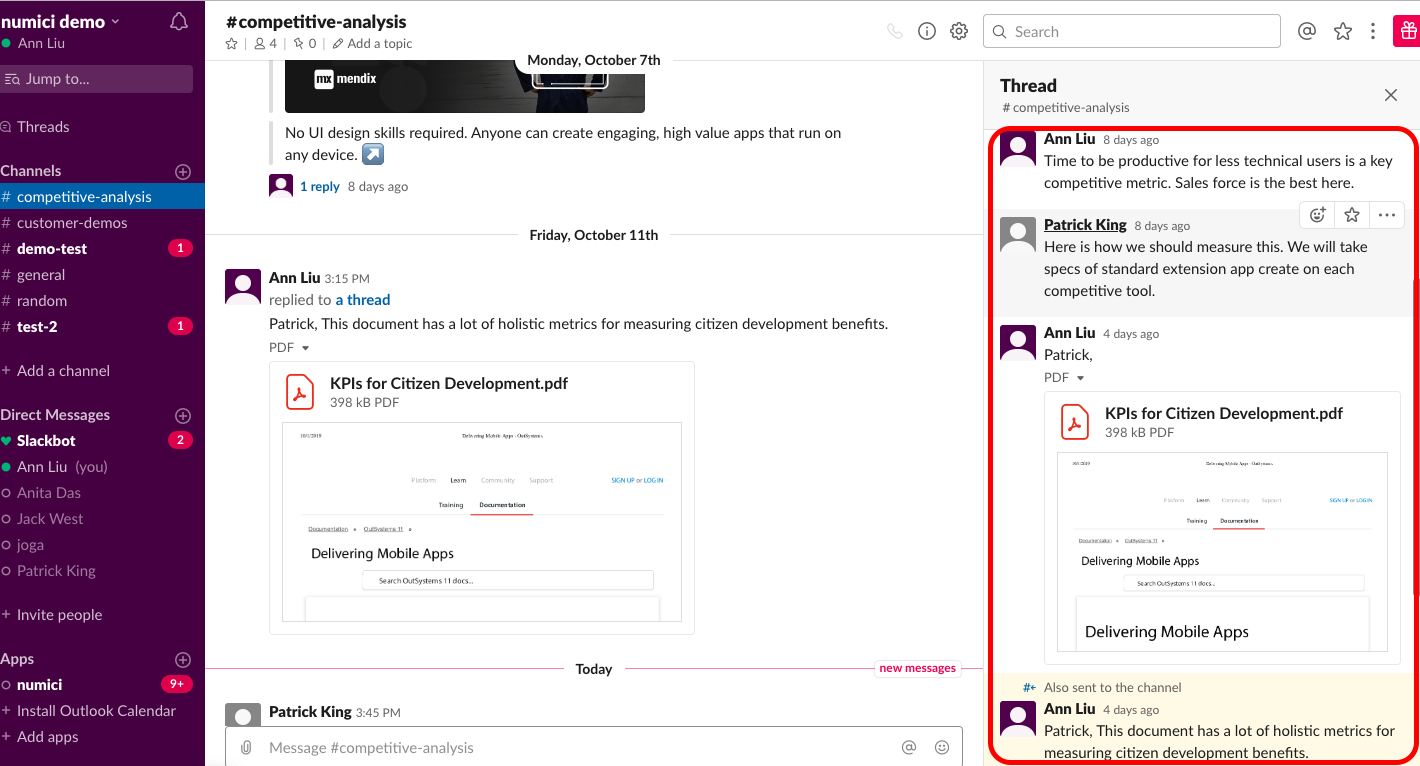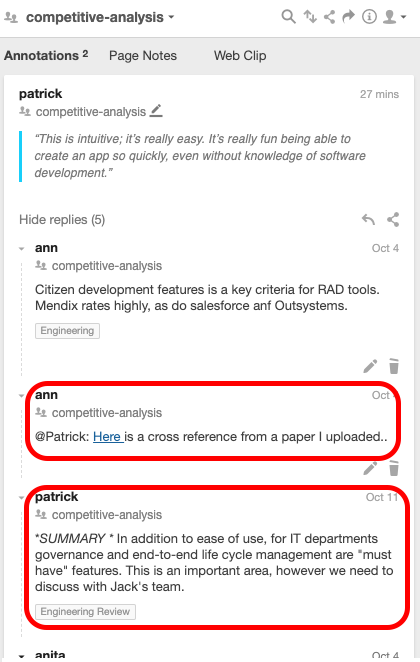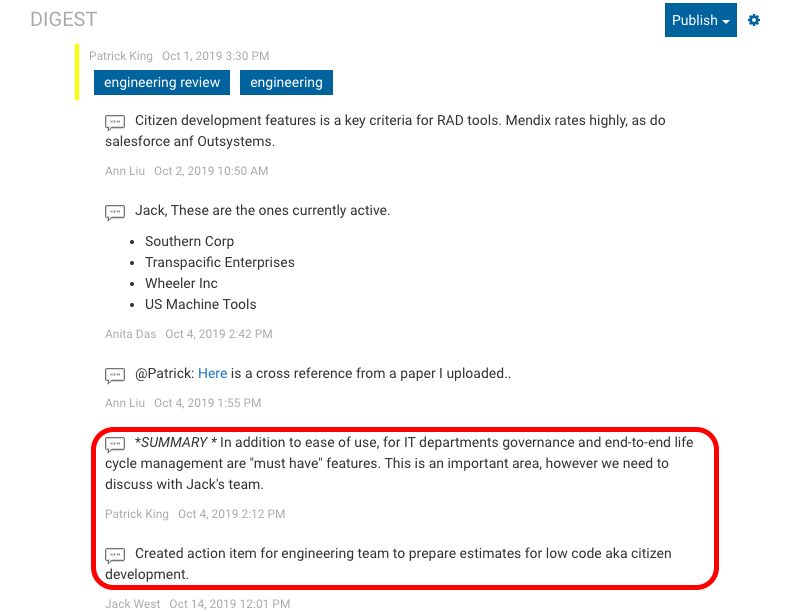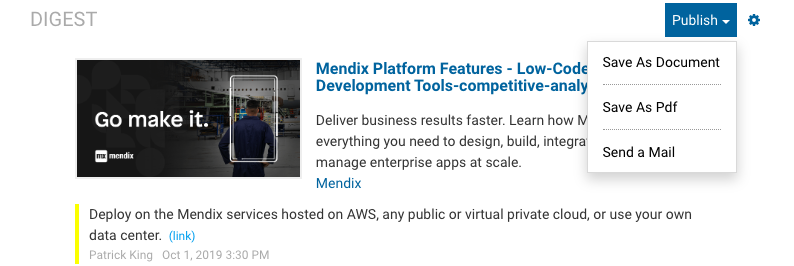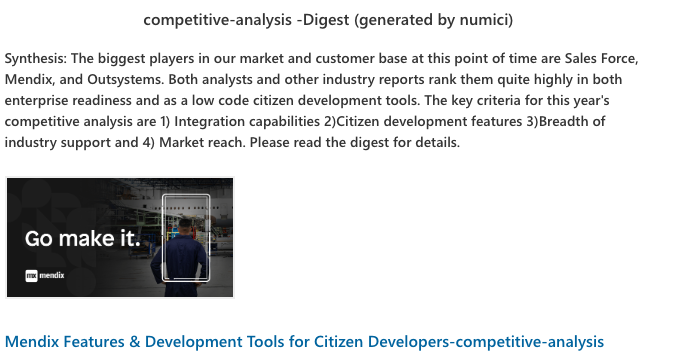Competitive Analysis
Patrick creates a slack channel, adds the team members to the channel and creates and links a numici taskspace to the channel.
All team members have their Box, Dropbox, Evernote and Onedrive accounts connected to Numici. This is a onetime task which takes less than a few minutes. Now content from these repositories can be used in Numici without making copies.
Team members add relevant files from the repositories to the taskspace.
Patrick forwards a number of key emails from sales regarding specific competitive situations to a designated inbox in Numici and adds them to the taskspace.
Ann adds each of the competitor web site to the taskspace.
Jack and Anita are notified on Slack that the project is ready for review
Jack logs into numici and uses a tag-based filters to get a Numici digest of items he needs to address.
He reads the summaries and if needed, the details of the conversations and responds with further comments and action items.
Within the conversation on “low code development”, he creates an action item for his engineering team within Numici, with rich context of the Numici conversation. Numici integrates in real-time with Asana to monitor the execution of the action item.
Patrick is notified on Slack when Jack and Anita complete their reviews. He views the digest and adds summaries and action items as required.
Summary
You have seen key elements of the Numici workflow: content organization, highlighting and annotation, collaboration in context, and synthesis.
During a project, highlighting, annotation and collaboration happen repeatedly until all taskspace content is processed.
Content can be added at any time during the project as a result of insights during collaboration. Synthesis is also multi-faceted and can occur at multiple stages of a project.
As we have seen in this use case, digests can be used as the interim documents between the core team (product and marketing managers) and executive reviewers and stakeholders. After the review and alignment phase, customized digests are used to communicate with development and marketing teams.
Numici ensures a high level of productivity by offering an end-to-end workflow in a single cloud based tool with efficient multi-tasking, contextual collaboration, and customizable synthesis. With the framework of a taskspace, Numici ensures that no information falls through the cracks during analysis.
